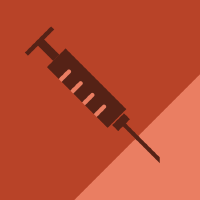Topic Menu
► Topic MenuTopic Editors

2. Internal Medicine, School of Medicine, UniCamillus, Saint Camillus International University of Health Sciences, 00131 Rome, Italy

Advances in Vaccines and Antimicrobial Therapy
Topic Information
Dear Colleagues,
The fields of prevention and treatment of infectious diseases have been gaining momentum after the strike of the coronavirus pandemic, with several advances both in vaccine technology and in the development of new antimicrobials. The usefulness of monoclonal antibodies has been tested, along with several old and new compounds with antiviral activity, but the search for new avenues, combining diverse strategies and reexamining older drugs for potential new activities, is quickly evolving. Interactions of drugs with the local microbiota, combinations of systemic approaches, targeting immune defense mechanisms together with arresting microbial host invasion, refinements in nano-formulations, drug delivery, rapid genotyping of microorganisms and engineering of bacteriophages in the fight against multidrug resistance are just some of the areas in which breakthrough research is expected to bring significant advances in the near future. The aim of this Topic is to offer an updated view of the advances in all the fields of antimicrobial therapy and prevention. This Topic collection invites contributions of research articles, reviews and metanalyses, exploring the new horizons of antimicrobial therapy and vaccine development. Both in vitro and in vivo studies, field studies and reports, as well as bold new hypotheses based on original observations are also welcome. We as Editors expect both academic research institutions and industry research to be represented in this collection on issues of primary relevance for health systems and individual safety in the near future.
Dr. Roberto Paganelli
Dr. Raffaele D’Amelio
Topic Editors
Keywords
- drug delivery
- phage therapy
- antibiotic resistance
- antivirals
- vaccine technology
Participating Journals
| Journal Name | Impact Factor | CiteScore | Launched Year | First Decision (median) | APC |
|---|---|---|---|---|---|

Antibiotics
|
4.8 | 5.5 | 2012 | 13.7 Days | CHF 2900 |

Biomedicines
|
4.7 | 3.7 | 2013 | 15.4 Days | CHF 2600 |

Microorganisms
|
4.5 | 6.4 | 2013 | 15.1 Days | CHF 2700 |

Parasitologia
|
- | - | 2021 | 19.8 Days | CHF 1000 |

Pathogens
|
3.7 | 5.1 | 2012 | 16.4 Days | CHF 2700 |

Vaccines
|
7.8 | 7.0 | 2013 | 19.2 Days | CHF 2700 |

MDPI Topics is cooperating with Preprints.org and has built a direct connection between MDPI journals and Preprints.org. Authors are encouraged to enjoy the benefits by posting a preprint at Preprints.org prior to publication:
- Immediately share your ideas ahead of publication and establish your research priority;
- Protect your idea from being stolen with this time-stamped preprint article;
- Enhance the exposure and impact of your research;
- Receive feedback from your peers in advance;
- Have it indexed in Web of Science (Preprint Citation Index), Google Scholar, Crossref, SHARE, PrePubMed, Scilit and Europe PMC.

